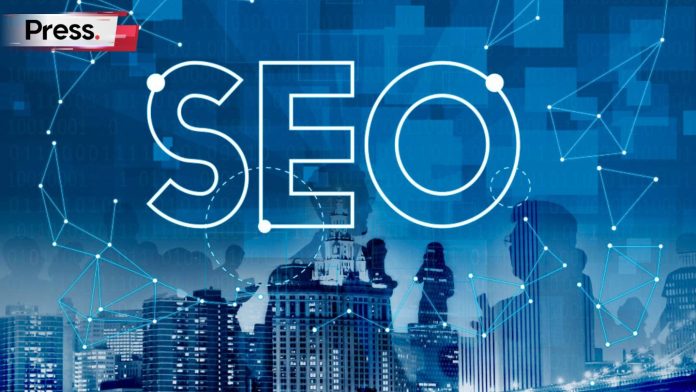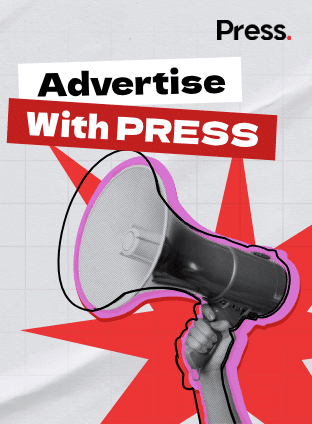Key Takeaways
- SEO remains the foundation of online visibility in Malaysia. Google still dominates local search, so SEO continues to deliver the highest ROI through steady traffic, leads, and conversions.
- AEO is the new frontier for brand authority in AI-driven search. As Malaysians use ChatGPT, Copilot, and Google AI Overviews for quick answers, optimising for AI citations helps your brand appear as a trusted expert.
- Both SEO and AEO rely on expertise, entities, and structure. Consistent brand mentions, author bios, schema markup, and question-based formatting improve your chance of ranking and being quoted.
- Content freshness and local context now matter more than keywords alone. Regularly update data, pricing, and Malaysian references to maintain accuracy and AI trustworthiness.
- Adopt a hybrid strategy: 70% SEO, 30% AEO. Use SEO for long-term demand capture and AEO for conversational exposure. Together, they future-proof your business across search and AI platforms.
Table of Contents
ToggleSEO vs AEO, which is better? Online search behavior in Malaysia is evolving. While SEO (Search Engine Optimization) still drives most website traffic, AEO (Answer Engine Optimization) is emerging as the new way to be visible in AI-driven platforms like Google AI Overviews and ChatGPT Search. For Malaysian businesses, this comparison is not about choosing one or the other. It’s about knowing how both fit together in your digital strategy.
SEO vs AEO: What Is SEO?
SEO (Search Engine Optimization) is the practice of improving your website’s visibility in search engines like Google and Bing. The goal is simple: appear on the first page when users search for products or services related to your business. Good SEO involves three key layers:
- Technical SEO: Making sure your website loads fast, is mobile-friendly, and easy for Google to crawl.
- On-page SEO: Using relevant keywords, structured headings, and internal links so each page ranks for the right intent.
- Off-page SEO: Building backlinks, reviews, and citations to signal credibility.
When done right, SEO brings long-term, compounding traffic that fuels consistent lead generation. (Source: Google Search Essentials, Backlinko)
What Is AEO?
AEO (Answer Engine Optimization) focuses on getting your brand featured in AI-powered search results, such as ChatGPT, Bing Copilot, Perplexity, and Google’s AI Overviews. Instead of fighting for a top-10 blue link, AEO helps you become the trusted source that AI assistants cite when people ask questions like “What is SST Malaysia?” or “Which is the best online payment gateway?” AEO strategies include:
- Writing question-based headings (e.g., “What is…?”, “How to…?”).
- Structuring concise and factual answers.
- Using entities (names, brands, places) for clarity.
- Regularly updating data and sources for freshness.
In short, AEO builds visibility without clicks, helping your brand appear in voice answers, chat summaries, and AI-generated responses. (Source: Semrush AEO Guide, Google AI Features)
SEO vs AEO is arguably a flawed question. Neither SEO nor AEO are better or worse than the other, they both have their place in boosting a business.
Read More: Top 5 AI Innovations in SEO For Your Content Marketing Strategy
Quick Comparison Table for SEO vs AEO
Category | SEO | AEO |
Goal | Rank web pages in search results | Earn citations in AI answers |
Appears in | Google Search, Maps, Snippets, News | AI Overviews, ChatGPT, Copilot, Voice Assistants |
Success Metric | Organic traffic, clicks, leads | AI citations, inclusion rate, brand mentions |
Core Focus | Keywords, content depth, backlinks | Entities, factual accuracy, structure, authority |
Time to See Results | 3–6 months | 1–3 months (faster for factual topics) |
Best Use Case | Product discovery, local SEO, long-term traffic | Instant answers, brand authority, thought leadership |
(Sources: Google Search Central, Semrush, Backlinko)
Core Features of SEO vs AEO
SEO
- Technical Foundation: Fast load time (<3s), HTTPS, mobile-friendly, crawlable, clean site architecture.
- Content Architecture: Use topic clusters (pillar + supporting pages) for authority and internal linking.
- On-Page Optimisation: Keyword in title, H1, intro, URL, meta tags; strong H2/H3 hierarchy; schema markup.
- Backlinks & Digital PR: Build links from Malaysian directories, niche blogs, and media (e.g. The Star, Vulcan Post).
- Analytics: Track with GA4 and Search Console; monitor CTR, conversions, and keyword ranking trends.
(Source: Google Search Essentials, Backlinko)
AEO
- Q&A Structure: Use question-style H2s with concise, 50–80-word factual answers.
- Entity Optimisation: Mention brand, location, and product names consistently; use structured schema.
- EEAT Signals: Add author bios, credentials, and reputable sources for trustworthiness.
- Freshness: Update quarterly, refresh stats, and timestamp updates (“Updated Oct 2025”).
- Schema & Data Layering: Apply FAQ, HowTo, and Organization schema for AI comprehension.
- AI Visibility Tracking: Log citations from ChatGPT, Copilot, and Perplexity; measure inclusion rate.
(Source: Semrush AEO Guide, Google AI Features)
Pricing in Malaysia
Service | Typical Package | Estimated Cost (MYR) |
SEO Retainer | Monthly full-service (technical, content, links) | RM1,500 – RM6,000/month for SMEs |
SEO Project | One-off site audit or content hub build | RM5,000 – RM40,000/project |
AEO Add-on | Entity mapping, structured Q&A, content refresh | RM2,000 – RM8,000/month or RM8,000 – RM25,000/quarter |
Most Malaysian agencies now bundle AEO into their SEO retainers. For best results, ask explicitly for AEO deliverables such as schema updates, freshness audits, and AI citation tracking. (Sources: VeecoTech Malaysia Pricing, Maximus SEO Package Malaysia, Backlinko SEO Pricing Study)
Head-to-Head Breakdown
- Market Fit in Malaysia
SEO remains the priority. Malaysians still begin searches on Google, especially for local services, products, and reviews. AEO suits industries with informational or regulatory content—law, finance, or government-related topics. (Source: Statcounter, Google Search Central) - Content Format
SEO prefers detailed, keyword-rich guides or service pages. AEO thrives on concise, data-backed summaries and FAQs. (Source: Semrush AEO vs SEO) - Measurement & Tracking
SEO uses measurable KPIs: keyword ranks, traffic, conversions. AEO measures citations, AI inclusion, and brand mentions within AI answers.
(Source: Google AI Features, Semrush) - Time to ROI
SEO builds gradually but compounds over time. AEO can gain early exposure for trending or factual topics.
(Source: Google Search Central) - Risk Profile
SEO is stable and well-established. AEO is experimental but high-impact for visibility in conversational search.
(Source: Semrush, The Verge)
Recommended Strategy for Malaysian SMEs
- Unified SEO + AEO Framework: Build a technically sound SEO base; layer AEO with structured Q&A sections and concise summaries.
- Localised Keyword & Intent Targeting: SEO for transactional searches (“solar installer Kuala Lumpur”); AEO for informational questions (“What is SST Malaysia?”).
- Entity Mapping: Document all business entities (brand, founders, locations, products); maintain naming consistency site-wide.
- Original Data & Insights: Add surveys, studies, or expert quotes to attract backlinks and AI citations.
- Quarterly Content Refresh: Review and update content with new prices, regulations, and references every three months.
- Dual-Metric Tracking: Track SEO (traffic, CTR, conversions) + AEO (citations, AI inclusion) for a holistic visibility report.
- Resource Allocation: Maintain a 70:30 ratio—70% on SEO fundamentals, 30% on AEO innovation.
- Team Education: Train writers to use question-based headers, structured data, and EEAT-driven storytelling.
Read More: SEO Ranking: Comparing 5 AI Tools That Boost Malaysian Businesses
Conclusion: The Clear Winner in SEO vs AEO
For Malaysian business owners in 2025, SEO remains the clear winner for return on investment. It is the foundation of long-term growth and the most cost-effective channel for sustained visibility.
However, AEO is the fast-rising complement. It expands your reach into AI-driven platforms that more Malaysians are beginning to use for quick answers and comparisons. In short:
Use SEO to be found. Use AEO to be quoted.
The businesses that invest in both with the help of a reliable PR agency will own the search and AI conversation in 2025 and beyond. (Source: Statcounter Malaysia, Google Search Central, Semrush)
Frequently Asked Questions About SEO vs AEO
Will AEO Replace SEO?
No. AEO depends on SEO foundations like authority, links, and content quality. They work together.
Can One Page Rank For SEO and AEO Simultaneously?
Yes. Use structured headings, concise definitions, and in-depth sections to cover both intents.
Which Works Faster For Malaysian Businesses?
AEO can show visibility quicker in AI results, but SEO drives consistent sales over time.
How Often Should I Update My Content?
Quarterly refreshes are best. Update prices, tools, and local regulations to maintain freshness.
Do I Need A Separate AEO Team?
Not necessarily. Your SEO team can integrate AEO by following structured content and entity practices.
What’s The Best Starting Point For Small Businesses?
Begin with SEO basics—Google Business Profile, fast site speed, and keyword mapping. Add AEO later when you have content worth quoting.


